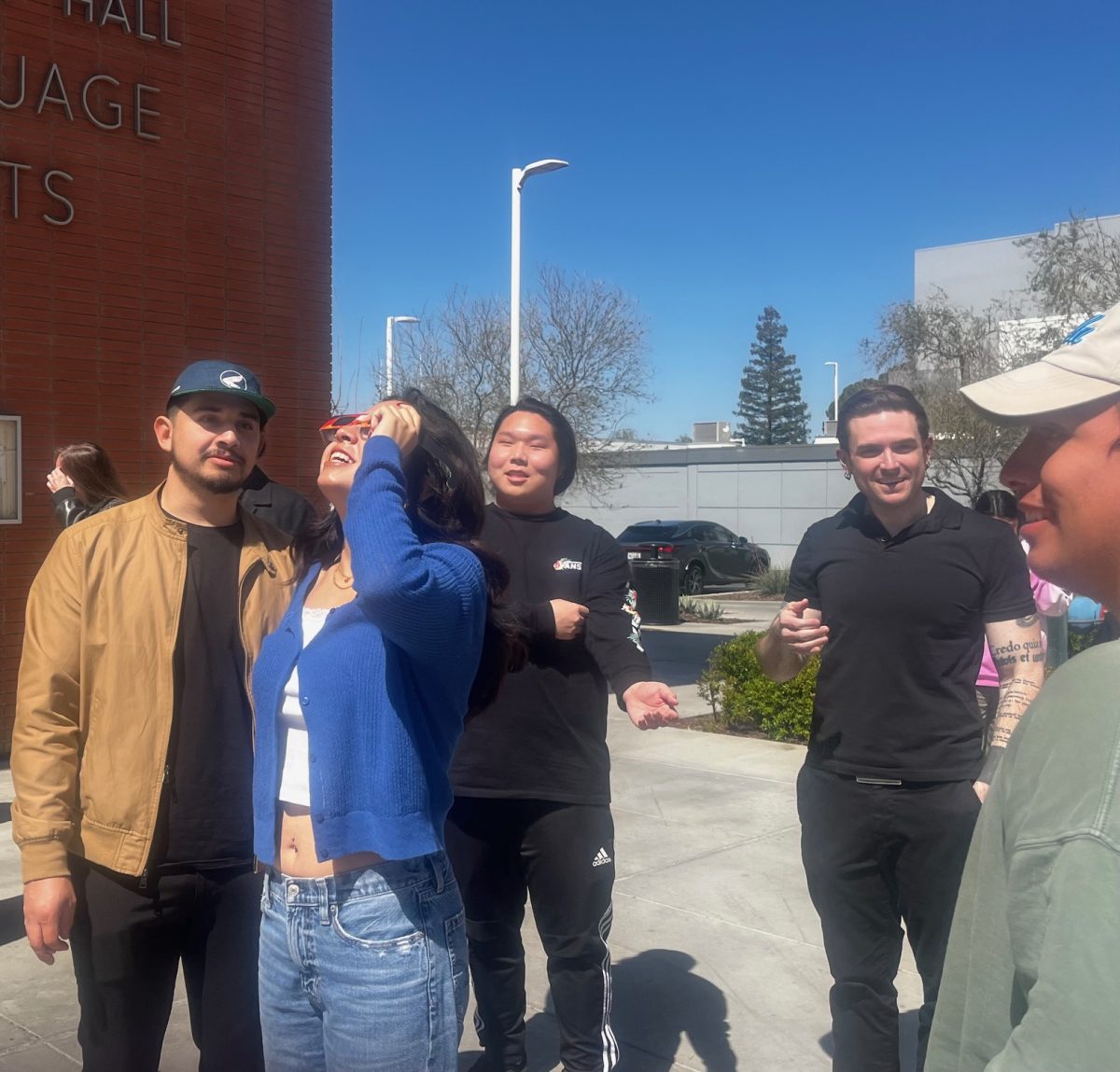On April 8, students in Japanese one with P at Bakersfield College gathered to witness a phenomenon. at 11:12am the peak of the solar eclipse could be seen just outside of our doors and lasted a total of 8 minutes.
A total eclipse, according to the National Aeronautics and Space Administration or N.A.S.A, is when the moon passes in-between the sun and earth completely blocking the face of the sun. while California will not experience totality, students experienced the partial covering of the sun with glasses and other eye protection sold at stores such as Vons or stretched their creative legs and make their own out of a shoebox and a pinhole for a safer more indirect view.
Abbey Interrante at Nasa explains that the 2024 solar eclipse widely outshined the solar eclipse of 2017 due to its passage over densely populated cities and areas. Interrante also stated that with the sun being in or near solar maximum, viewers will have a better chance to see prominence-which appeared as bright, pink curls or loops coming off the sun.
Students in the course Japanese one with Professor Takeuchi had stood outside to watch this display with glasses in hand. Students such as Abram Tawfik exclaim,” It was really amazing and was really cool to enjoy this with my classmates.” Students such as Ryan Perez or Tadeo Pena, fellow students of Professor Takeuchi, also could be found outside watching the eclipse with during the peak of the sun’s covering, unfortunately for Pena hurting a retina or two in the process to soak up the experience. Perez stated, “I wouldn’t have noticed it if it wasn’t for the glasses.” Students also would try to capture pictures of the eclipse using the glasses and a phone camera.
The next total solar eclipse that students may have access to may not be for some time. Nasa estimates that the next total solar eclipse may not happen until Aug 12, 2026. More information on both solar and lunar eclipses can be found on the NASA website as well as future travel and viewing tips.


